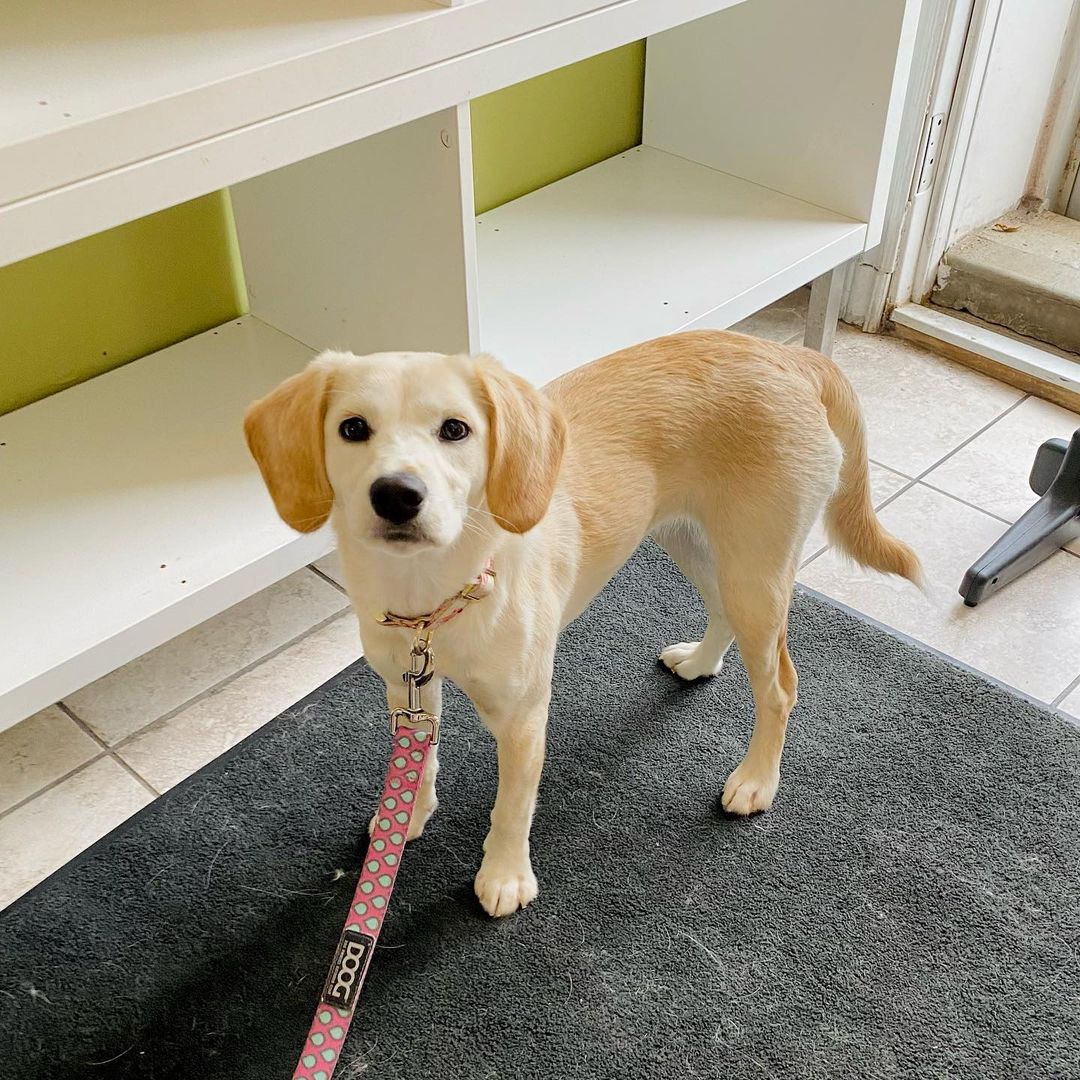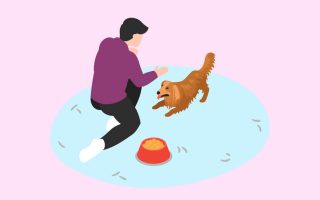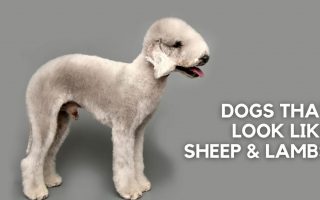When thinking of getting a dog suited to apartment life, many people opt for a smaller breed of dog.
Others do their research and choose a dog with low energy or that doesn’t need much exercise.
But what about a dog that is highly energetic, playful, and loves to stay busy?
Blue Heelers were bred for outdoor jobs, which made them perfect for herding cattle even in a hot, rough climate and terrain.
When they first originated, these dogs were not very commonly kept indoors for most of their day.
Now, however, many of these dogs enjoy living with their family in the home as much as doing work outdoors.
But what if you are considering getting a Blue Heeler, but live in an apartment rather than a typical home?
Are Blue Heelers good apartment dogs?
If you are wondering how to care for a Blue Heeler in a smaller living space, then this article is for you.
Read along to find out are Blue Heelers good apartment dogs, and how to care for one in this smaller kind of home.
[wpsm_toplist]
Are Blue Heelers (Australian Cattle Dogs) Good Apartment Dogs?
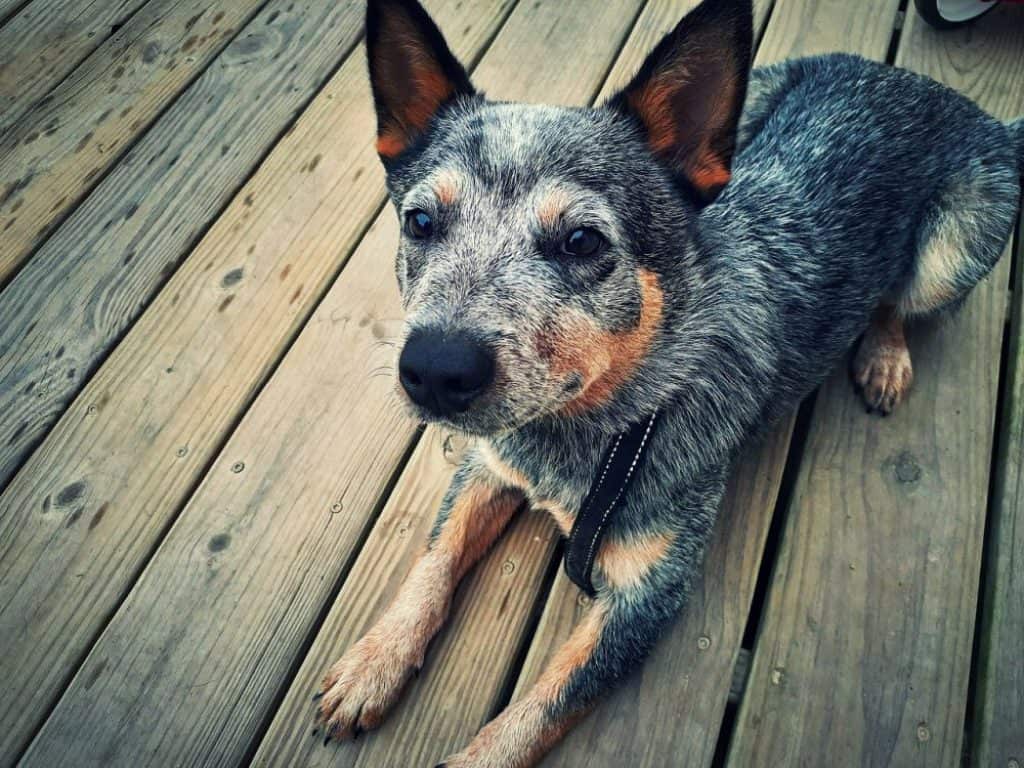
Blue Heelers are dogs which need plenty of free space to run and release their energy.
It is preferable to having a large garden or yard when owning one of these dogs.
However, that doesn’t mean that a Blue Heeler cannot be kept in an apartment with some training and precautions.
So are Blue Heelers good apartment dogs?
Of course, a Blue Heeler does best in a regular home with a yard.
But as long as plenty of physical activity is provided on a daily basis, a Blue Heeler can be a good apartment dog.
For your part, you will need to ensure that there is plenty of space nearby to bring your Blue Heeler for walks.
You must also have access to an area where your dog can run free from time to time.
The Blue Heeler is full of energy and needs plenty of mental stimulation to stay happy.
Just simply going on brief walks around the neighborhood each day as part of a routine is not enough.
They need to engage in interactive games every once in a while, explore, and be able to run and play.
A Blue Heeler will be a good apartment dog as long as he meets his daily exercise requirements.
As well as that, he will need to engage in additional fun activities to ensure he doesn’t get bored and become destructive.
How Long Can You Leave Your Blue Heeler Alone?
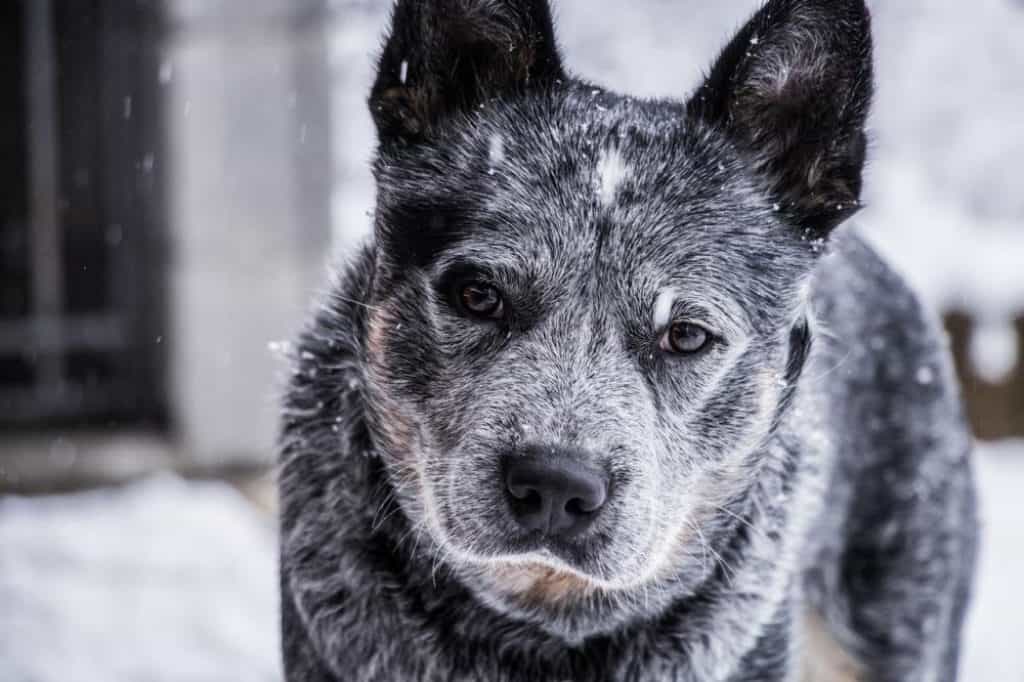
When it comes to a Blue Heeler puppy, he cannot be left alone for any more than an hour or two at a time.
When leaving your puppy unsupervised, it should be in a large crate or pen.
This is due to the fact that puppies can get up to anything, and leaving them on their own can be very dangerous.
A crate or play pen can give them a safe and secure space where they won’t damage anything or hurt themselves.
When it comes to an adult Blue Heeler, they can be left alone for 4 to 5 hours, or sometimes a bit longer.
However, it is not advised to leave your Blue Heeler alone for this long on a regular basis.
This is especially a bad idea if you live in an apartment, and have no yard or garden.
Leaving a Blue Heeler alone for long periods of time often can lead to problematic or destructive behavior.
These dogs need plenty of social interaction and human companionship, and without it they can become very unhappy.
Additionally, Blue Heelers have a lot of energy, and need to receive mental stimulation every day.
Leaving them on their own for a long time can make them restless and bored.
As a result, they may engage themselves in chewing or destroying items in your home.
Also, these dogs can suffer from separation anxiety if left alone every day for long periods of time.
If you are going to leave your Blue Heeler alone for a few hours at a time, ensure he got to go for a walk or run beforehand.
This will help him release his energy, and he will prefer to rest while you are away.
You can also leave him with plenty of toys, especially interactive ones, and rawhide bones to chew.
How To Prepare For A Puppy In An Apartment?
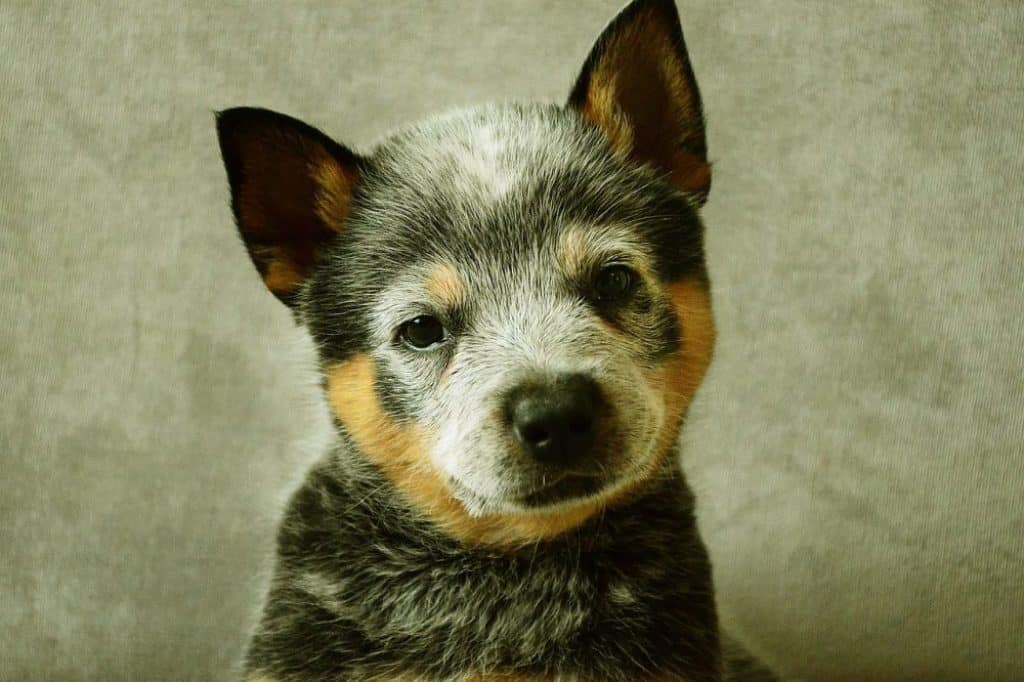
Create A Personal Space For Your Puppy
Of course, the space in an apartment is limited. Your puppy will not have as much area to play in and roam as in a regular house.
For this reason, set aside a room or area where you can give your puppy his own space. This should be an area where there is quiet, peace, and no distractions.
This will be the space he will retire to for rest and sleep. Ensure you give him a comfortable bed or blanket to lie on.
You could also set aside a space to make your puppy [amazon link=”B07FDHB4NC” title=”a play pen” link_icon=”amazon” /], where he can have all his toys in one area.
He will be able to play there and will not make a mess in the rest of your apartment.
[amazon box=”B07FDHB4NC”]
Keep The Door To Your Balcony Shut
People may purposely leave the door to their balcony open at times for a number of reasons.
It could be to air their apartment out, to cool down on hot days, or simply because they forgot.
However, a balcony door must always be shut when a new puppy is in the house.
The balcony is a very dangerous place for a puppy. Even if your balcony has very small spaces between the fence bars surrounding it, it can still have fatal consequences.
Puppies are naturally curious as of nature, and can possibly squeeze through and fall down.
As an alternative solution, you could install a [amazon link=”B0746RGRL3″ title=”puppy proof gate” link_icon=”amazon” /]. This can be a great way to prevent your puppy from entering onto the balcony to explore.
Additionally, it will allow you to leave the door to the balcony open without taking any risk.
[amazon box=”B0746RGRL3″]
Remove Chewable Items
When your puppy gets home, he will likely bite and chew everything in sight. This is especially true of breeds like the Blue Heeler.
As a result of their high energy and need to be kept busy, they can be prone to chewing items.
For this reason, remove from sight any pillows, low-hanging curtains, shoes, and other things.
Otherwise, these may end up being ripped or damaged.
Check For Toxic Items
Puppies can eat anything that gets their attention and is lying around. In some apartments, there is not much space and some things may lie on the floor.
Before getting your puppy, check there are no batteries, cables, detergents, hair accessories, or loose items lying around on the floor.
Also, if you have any plants, ensure these are not toxic if eaten. Otherwise, your puppy could fall ill or suffer poisoning.
How Do You Potty Train A Puppy In An Apartment?
[amazon box=”B00ICVHY5I”]
First of all, remember that all puppies can have accidents, as they have small bladders and can’t hold it in for long.
Before bringing your puppy home, ensure to lay out some newspapers in his play area.
This is just in case he can’t hold it in for the first few days and goes on the floor, carpet, or rug instead.
As soon as your puppy gets home, begin potty training him as soon as possible. Bring him outside where he can do his business, preferably on the grass instead of the side road.
When you see him go on the grass, praise and reward him for it. Do this each time he goes, to ensure he learns where it is that you want him to go.
Now introduce the command, ‘Go potty’, or something similar to that.
Tell your puppy to ‘Go potty’, when you see him about to relieve himself, so that he links the command with the act.
When your dog sees what you want of him, he will less likely have the urge to do it in your apartment.
It is nonetheless important to bring your puppy outside immediately after waking up, finishing each meal, and before bedtime.
Doing this can also get him accustomed to a routine. He will know what’s coming next, and much more likely to hold it in until he gets outside.
He may even show you signs of wanting to go to outside, knowing that it is inappropriate to relieve himself at home.
How To Train Your Australian Cattle Dog To Living In An Apartment?
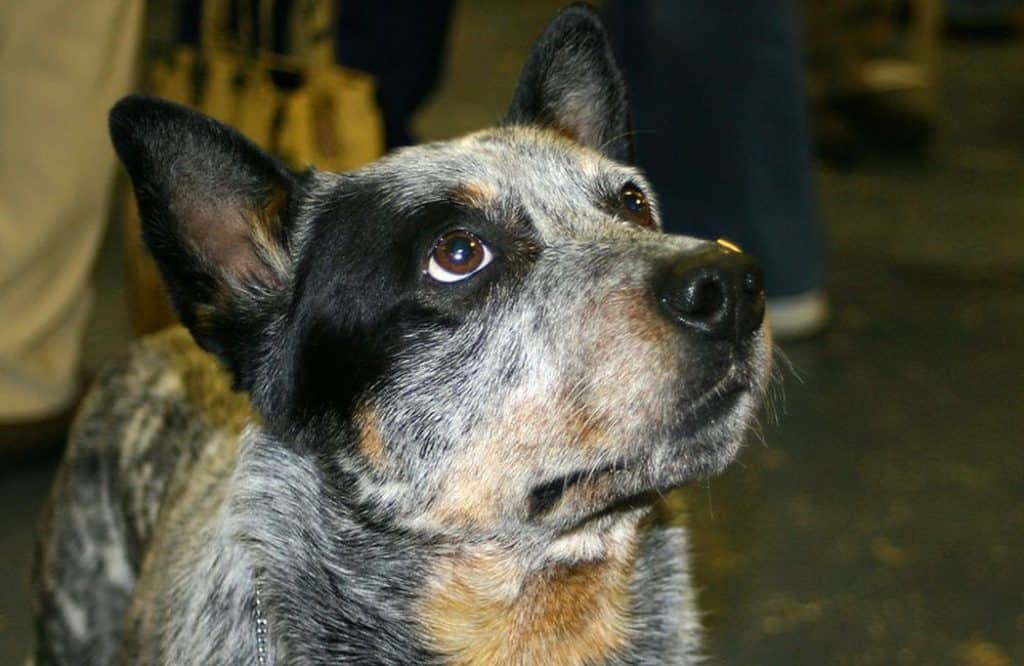
Prevent Chewing In The Home
Provide your dog with plenty of toys which they can chew on and play with.
Not only will this help combat boredom, but also help them release their energy.
Space in an apartment is limited, so you will need to organize games which can take place in a small home.
But what if you find that your dog still chews everything, even with plenty of toys to choose from?
Finding your dog’s bite marks on chairs, the sofa, or couch can be frustrating.
This is especially problematic when the damaged furniture belongs to the owner of the apartment if you are renting it.
So how can you prevent this sort of chewing?
One of the best solutions is buying a special [amazon link=”B06XCZ8KJJ” title=”no chew spray” link_icon=”amazon” /] for dogs which will prevent your dog from wanting to bite the furniture.
You can spray it wherever your dog chews, and because he won’t like the smell, it will prevent him from going near it.
You could also spray some essential oil such as citronella, peppermint, or cinnamon, which dogs hate.
This is another way of decreasing the chance of your dog destroying your furniture.
[amazon box=”B06XCZ8KJJ”]
Teach Your ACD Not To Bark
If your dog barks a lot in an apartment, this can be a problem for your neighbors.
Fortunately, Blue Heelers are a breed which is not prone to barking a lot, unless they are protecting your home.
However, if your dog still barks a lot, you could try spraying him once with some water whenever he starts barking.
This is a better solution than shouting at your dog, which often has the complete opposite effect.
It will only show him that you are also making loud noise, which may incline him to bark even more.
Bring sprayed with water upon barking can discourage your dog from doing it regularly, as he will link the behavior with a negative experience.
Establish A Routine
Establishing a routine can help your dog get accustomed to apartment life and make it easier for you.
While living in an apartment, bringing your dog outside constantly throughout the day whenever he wants can sometimes be problematic.
This is especially true if your dog wakes you up early to go outside, or late at night.
For this reason, make a routine which can help your dog get used to going to the bathroom at certain times.
Wake up at a similar time each day, and also take your dog out last thing at night so he won’t want to go later.
In addition, feed him at set times when you know you will be free to take him outside afterward.
Conclusion
Are Blue Heelers good apartment dogs?
Blue Heelers are good apartment dogs, but only with plenty of physical activity every day.
When your dog gets his daily exercise requirements fulfilled, he’ll be happy to rest when you get back to your apartment.
However, when bringing a new puppy into your apartment, you will have to take under consideration the fact that there is limited space.
For this reason, you will need to organize an area where your puppy can play without causing a commotion.
You will also have to establish a routine for your puppy to stick to, to get him accustomed to going to the bathroom at certain times of day.
Additionally, you must remove all dangerous items from sight that might be chewed or eaten.
Instead, provide plenty of chewable toys and fun games that will occupy your dog.
When you prepare your home and dog for apartment life beforehand. It can be completely fine to keep your Blue Heeler even in such a small living space.

